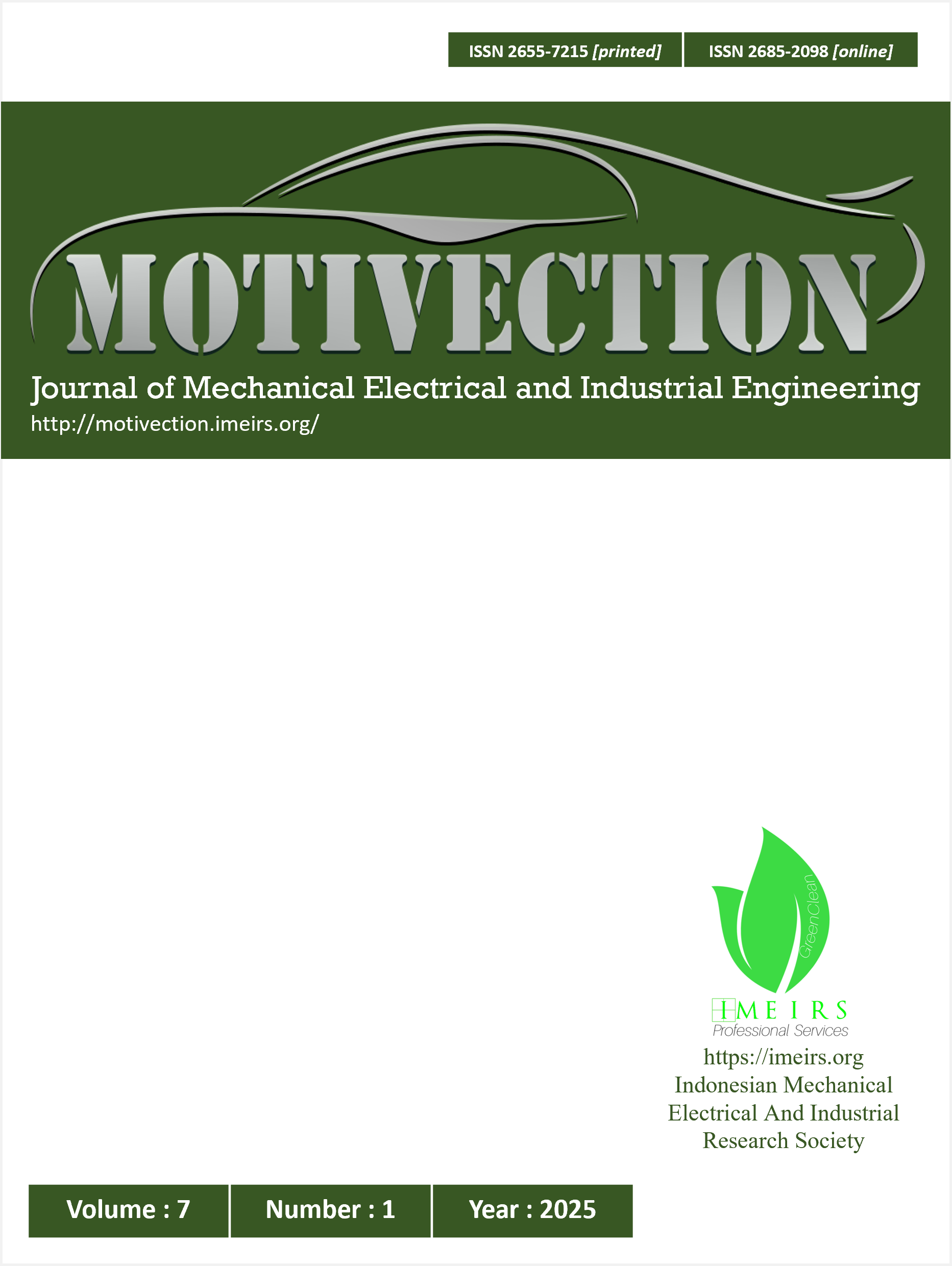Seismic Analysis of Minimum Separation Distance for Low-Rise Buildings in Padang City to Prevent Structural Collisions
##plugins.themes.academic_pro.article.main##
Abstract
This study examines the minimum effective separation distance between buildings necessary to avert structural damage from building pounding in Padang City, an area particularly vulnerable to seismic events. The study examines 45 structures throughout five districts, classified into three categories according to their height-to-width (H/L) ratio: (0.5–1.0), (1.1–1.5), and (1.51–2.0). Three pairs of ground acceleration records—Imperial Valley-06, Tokachi-Oki Aftershock, and Tokachi-Oki Mainshock—were selected and calibrated to align with the target response spectrum of Padang City using linear time-history analysis. The research assesses structural displacement capacity and drift ratio to ascertain the necessary minimum separation distances. The findings reveal that the minimum separation distance for Category A (H/L: 0.5–1.0), Category B (H/L: 1.1–1.5), and Category C (H/L: 1.51–2.0) spans from 40 cm to 48.4 cm, with a suggested practical separation of 50 cm per building. A separation distance of 1 meter is recommended to reduce the risk of structural collisions during earthquakes. These findings serve as a technical reference for urban planners, engineers, and legislators, facilitating safer building designs, enhanced seismic resilience, and diminished structural damage in earthquake-prone regions.
##plugins.themes.academic_pro.article.details##

This work is licensed under a Creative Commons Attribution 4.0 International License.
Copyright (c): Ardi Pratama, Masrilayanti Masrilayanti, Ruddy Kurniawan, Risma Apdeni (2025)References
[2] S. Kumar and G. Jaiswal, “Study of pounding behavior between adjacent multi-storied buildings of varying heights by Time History Analysis method,” JETIR, vol. 8, no. 10, pp. d189–d200, Oct. 2021. Available at: https://www.jetir.org/papers/JETIR2110322.pdf.
[3] S. Guérin-Marthe, P. Gehl, C. Negulescu, S. Auclair, and R. Fayjaloun, “Rapid earthquake response: The state-of-the art and recommendations with a focus on European systems,” International Journal of Disaster Risk Reduction, vol. 52, p. 101958, Jan. 2021, Available at: https://doi.org/10.1016/j.ijdrr.2020.101958.
[4] S. Jiang, C. Zhai, and Y. Liu, “Experimental and numerical studies of seismic induced story-to-story and inter-story pounding,” Structures, vol. 46, pp. 555–569, Dec. 2022, Available at: https://doi.org/10.1016/j.istruc.2022.10.061.
[5] B. T. Cayci and M. Akpinar, “Seismic pounding effects on typical building structures considering soil-structure interaction,” Structures, vol. 34, pp. 1858–1871, Dec. 2021, Available at: https://doi.org/10.1016/j.istruc.2021.08.133.
[6] M. Miari, K. K. Choong, and R. Jankowski, “Seismic pounding between adjacent buildings: Identification of parameters, soil interaction issues and mitigation measures,” Soil Dynamics and Earthquake Engineering, vol. 121, pp. 135–150, Jun. 2019, Available at: https://doi.org/10.1016/j.soildyn.2019.02.024.
[7] A. Tena-Colunga and D. Sánchez-Ballinas, “The collapse of Álvaro Obregón 286 building in Mexico City during the September 19, 2017 earthquake. A case study,” Journal of Building Engineering, vol. 49, p. 104060, May 2022, Available at: https://doi.org/10.1016/j.jobe.2022.104060.
[8] M. Miari and R. Jankowski, “Analysis of pounding between adjacent buildings founded on different soil types,” Soil Dynamics and Earthquake Engineering, vol. 154, p. 107156, Jan. 2022, Available at: https://doi.org/10.1016/j.soildyn.2022.107156.
[9] D. Isobe and T. Shibuya, “Preliminary numerical study on the reduction of seismic pounding damage to buildings with expanded polystyrene blocks,” Engineering Structures, vol. 252, p. 113723, Dec. 2021, Available at: https://doi.org/10.1016/j.engstruct.2021.113723.
[10] V. Follador, P. Carpanese, M. Donà, and F. da Porto, “Effect of retrofit interventions on seismic fragility of Italian residential masonry buildings,” International Journal of Disaster Risk Reduction, vol. 91, p. 103668, Jun. 2023, Available at: https://doi.org/10.1016/j.ijdrr.2023.103668
[11] D. Oktiari and S. Manurung, “Model Geospasial Potensi Kerentanan Tsunami Kota Padang,” Jurnal Meteorologi dan Geofisika, vol. 11, no. 2, Dec. 2010, Available at: https://doi.org/10.31172/jmg.v11i2.73.
[12] R. Apdeni et al., “Application of ground penetrating radar for evaluating foundation structure condition after earthquake,” Teknomekanik, vol. 7, no. 1, pp. 85–100, Jun. 2024, Available at: https://doi.org/10.24036/teknomekanik.v7i1.26772.
[13] BPBD Kota Padang, ”Mengenang Gempa 2009 di Kota Padang”. Feb. 2009. Available at: https://bpbd.padang.go.id/konten/mengenang-gempa-2009-di-kota-padang.
[14] F. A. Chairunnisa, “Evaluasi Kinerja Struktur Bangunan Rumah Toko Eksisting Pada Daerah Rawan Bencana Gempa Bumi,” Universitas Andalas. Apr. 2022. Available at: http://scholar.unand.ac.id/102807/.

